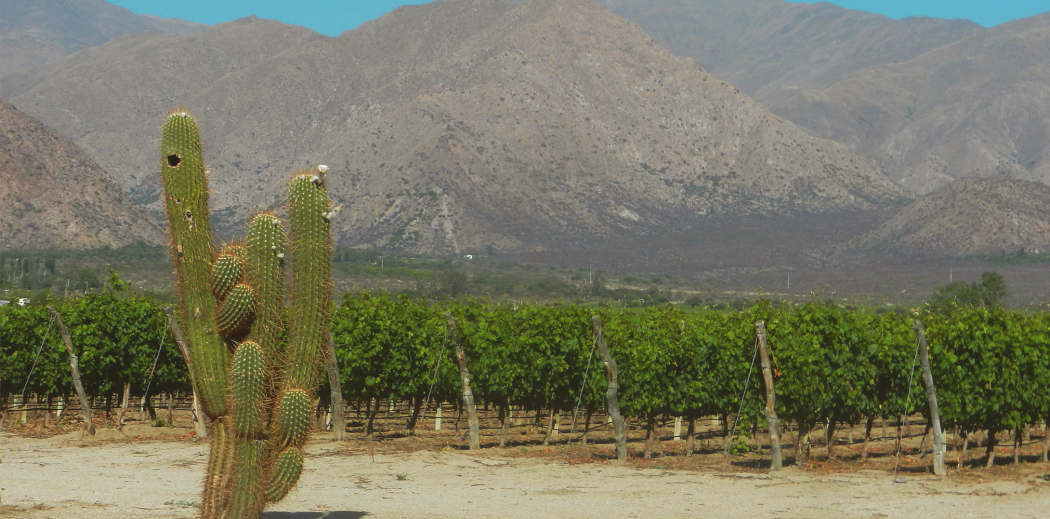You know how it goes: when you want wine, you head to Napa. When you want tequila (or mezcal!), you head to Mexico. That lifestyle, though, is making you miss out on wine from North America’s oldest wine-growing region (not Napa, but close). Since the Spanish brought vines to Mexico in the 16th century, they have continued to flourish despite outside setbacks.
After Hernán Cortés conquered the Aztecs in the early 1500s, legend says that he went through his wine a little more quickly than anticipated. To ensure he wouldn’t run into that problem again, he requested thousands of Spanish grapevines, giving birth to the first vineyards in Puebla, Querétaro, Aguascalientes and Coahuila states. Though grapes had been there before, Cortés’ thrived and gradually the New World no longer relied on imported juice from Europe.
Until the 1970s, Mexico’s wine region flew mostly under the radar. Part of that anonymity may be due to how close it lies to the 30th parallel, a line that’s believed to demarcate ideal wine regions. Anything that falls beneath it is considered too tropical to yield good wine, including the majority of Mexico.
Still, plenty of intrepid wine makers knew this was not the case. By the middle of the ‘70s, wine producers began to modernize the area’s wine production, primarily harvesting grapes in the Guadalupe Valley for inexpensive, commercial bottles. The Guadalupe Valley, one of the area’s main regions, is home to an arid climate, irrigation, and unfaltering sunshine and is also the birthplace of Baja’s culinary revolution. The energy put into the dining scene helped draw wine talent which in turn jolted the region into the award-winning one it is now.
The list of French, Spanish and Italian varietals that thrive in Mexico covers familiar names like Syrah, Chardonnay, and Zinfandel to lesser-known grapes like Nebbiolo, Carignane, Viognier, and Chasselas. However, the copious options aren’t the draw, but the blends with which winemakers have been experimenting. You’ll find Petit Verdot merged with Zinfandel, Sauvignon Blanc mixed with Chardonnay.
In some ways, that experimental attitude hampers the region’s attempts to establish it as an international player. Without any appellation laws, no one wine has emerged to craft an overarching identity. However, as the modern industry is still young, many producers aren’t deterred and see this as a time to test out blends and allow a national grape to emerge.
Intrigued? Mexican wine is still hard to come by in the states, and your best bet may be to take a detour south of the border. Here are the main spots you should know:
Baja California
This is a newcomer but the heartbeat of Mexico’s wine industry, hosting about 85% of wine production. It’s a must-visit for any wino and there’s good reason why its Guadalupe valley is called “Mexico’s Napa Valley.” Mix a Mediterranean climate with granite-rich soils and you get bold, strong wines that harbor a saline-like taste.
Sonora
Along with Baja, this is the northernmost wine-growing region, though it mainly produced brandy or grapes used to make raisins.
La Laguna
Another area that primarily devotes its produce to brandy, its Valle de Parras boasts two distinctions: it was the vineyard the Spaniards first planted, and its Casa Madero is the oldest, continually operating winery in North America. Located in a dessert at a relatively high altitude, Valle de Parras harbors a small area perfect for vines to thrive. Here, you’ll find Chardonnay, Chenin Blanc, and Syrah, along with – of course – brandy.
Central Mexico
Again, another place you’ll find primarily brandy (do you sense a trend?). However, in the state of Querétaro, you’ll discover one of the most prosperous wine growing regions, gracing drinkers with sparkling wine, Sauvignon Blanc, St. Emilion, Cabernet Sauvignon, and Pinot Noir. Fun fact: the Spanish word for sparking wine, vinos espumosos, translates to “foamy wine.”









thanks for the encouragement to give them a try!